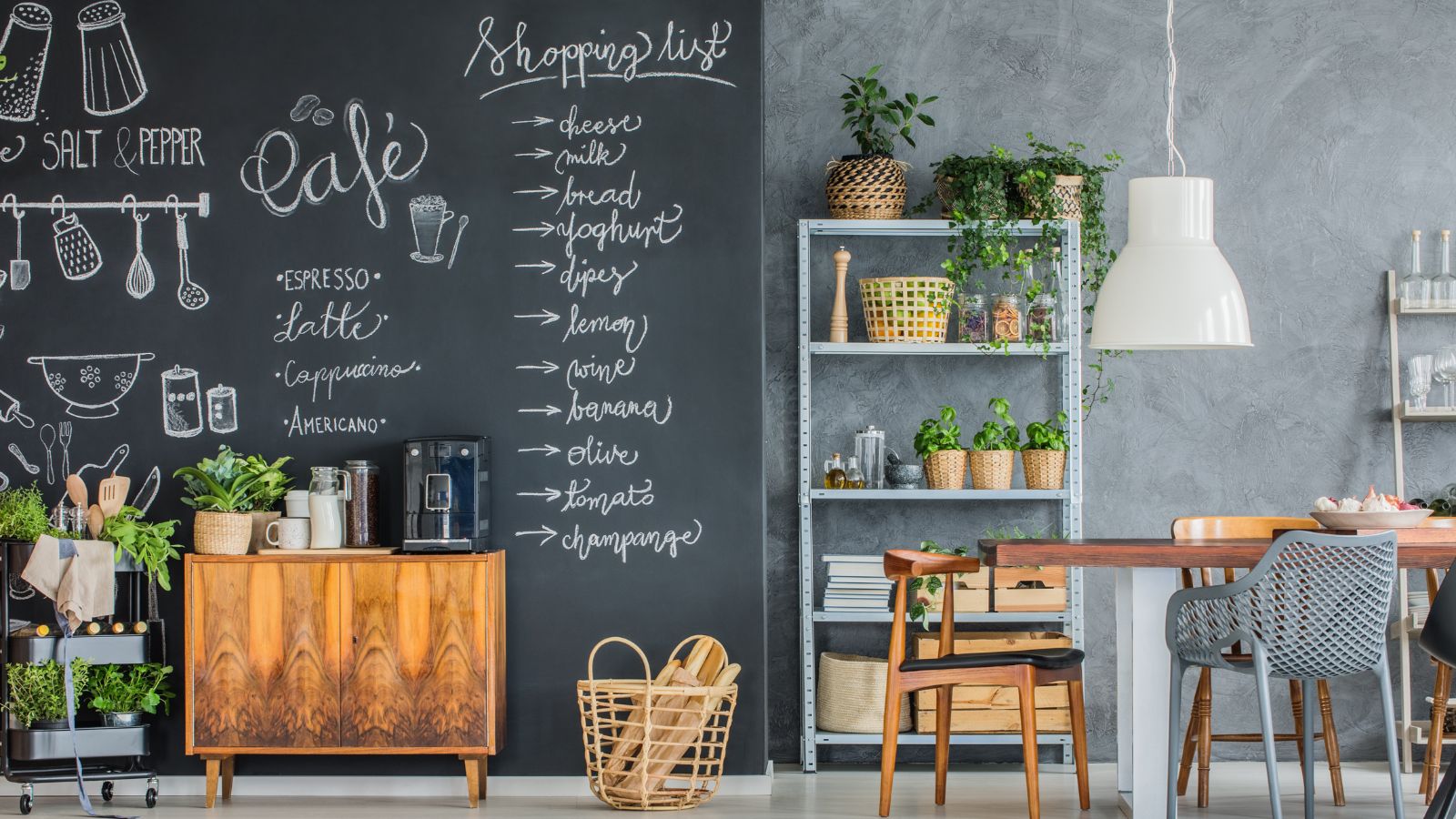The best way to clean a chalkboard – professional cleaners share their tricks
Whether you have a fun chalkboard wall or want to refresh your child’s toys, this cleaning trick will ensure a clean slate


Chalkboards are great additions to kids' playrooms and family kitchen walls, but after a few uses they always start to look a little worse for wear. So, what is the best way to clean the chalkboard to make it look like new again?
While you might reach for the wet wipes, cleaning experts suggest there is another, far more effective method that will restore the black backing to new again – and it doesn't require any scrubbing.
These are their favorite cleaning tips to wipe the slate clean and turn your chalkboard from dusty to dazzling.
The best way to clean a chalkboard
Whether you use your kitchen chalkboard every day to jot down a grocery list and organize a kitchen, or need to freshen up this art staple in your child’s bedroom after occasional use, this trick will ensure it comes out clean every time – no matter how much dust builds up there is, experts assure.

You will need:
- Distilled white vinegar: such as this scented cleaning vinegar, available at Walmart
- A clean microfiber cloth: also available at Walmart
- Distilled water
- Optionally: Baking soda: such as Arm & Hammer Pure Baking Soda, from Walmart
How to clean a chalkboard

1. Remove excess dust
If your chalkboard or the area around it is particularly dusty, you can use a vacuum cleaner with a HEPA filter, or a clean, dry cloth to pick up some of the excess chalk dust. This will make it a bit easier for the wet cleaning to remove any stains without smearing dust around.
Elizabeth Shields, operations manager at Super Cleaning Service Louisville recommends that you avoid using a feather duster, or any other cleaning tools that might spread the dust around and cause it to settle elsewhere in the room. This will only make your job harder and could even cause respiratory upset.
2. Wipe the board down with a mix of vinegar and water
If you want a spotless finish with stuff you already have at home, cleaning with vinegar is the way to go suggests Elizabeth Shields, cleaning expert:
‘I admit, I once grabbed wet wipes to clean scribbles and doodles on the chalkboard. But the residue and streaks left behind made me look for ways to clean it properly – and here’s what I learned. I use a clean microfiber cloth and then lightly mist it using a spray bottle. Water works fine for usual cleans, but if there are stains, you can whip up equal parts water and vinegar for a stronger solution.
‘You don’t want to oversaturate, so do not spray it directly on the surface. Wipe the board in circular motions once the solution is on the cloth. Don’t go overboard, and do this gently to avoid scratches and damage. Then if everything’s clean, grab a dry cloth and go over the surface to dry.’
3. Use baking soda for stubborn marks
If you are still left with deep staining otherwise called ‘ghosting’ on your chalkboard, you can also try cleaning with baking soda to help get into the minute gaps and remove chalk dust, adds Eliana Coca, cleaning expert and owner of E.C. House Cleaning. Mix up the baking soda into a paste with some distilled water and apply it to the problem areas, she recommends.
‘Gently rub it with a microfiber cloth, and then wipe it off cleanly with a damp cloth. This method is non-destructive to the chalkboard's surface and ensures that the board remains in good condition for longer periods, lessening the need for frequent intense cleanings.’
FAQs
How do you fix a chalkboard that won’t write?
If you cannot write on your chalkboard (i.e., the chalk will not adhere), it likely needs cleaning. To do this, use either a dedicated chalkboard cleaning spray or a mixture of equal parts water and white vinegar to buff away old chalk. Then, dry the board and continue using it as normal.
How do you make chalk art permanent?
If you want to avoid rubbing chalk art or writing off a chalkboard, you can use something like a strong hair spray over the top to add a small protective layer that will prevent chalk from being rubbed off by small knocks and scrapes. This will not be enough to protect against wiping it with a cloth, however, so be sure to carefully clean around your protected area.
In between deep cleaning, you can also use a felt eraser, rather than a standard chalkboard eraser, to help lift as much of the chalk dust as possible and prevent tough staining, adds Eliana Coca, cleaning expert. ‘Felt erasers tend to be gentler on chalkboard surfaces and do a great job at lifting dry chalk without smearing it,’ she explains. ‘Moreover, they prevent the excessive dust that might scratch the board when cleaning.’
Sign up to the Homes & Gardens newsletter
Design expertise in your inbox – from inspiring decorating ideas and beautiful celebrity homes to practical gardening advice and shopping round-ups.

Chiana has been at Homes & Gardens for two years and is our resident 'queen' of non-toxic living. She spends most of her time producing content for the Solved section of the website, helping readers get the most out of their homes through clever decluttering, cleaning, and tidying tips. She was named one of Fixr's top home improvement journalists in 2024.
-
 How to get rid of bean seed flies – a pest control expert reveals how to keep crops safe from these seed munchers
How to get rid of bean seed flies – a pest control expert reveals how to keep crops safe from these seed munchersAs their name implies, these insects primarily feed on bean crops
By Tenielle Jordison
-
 Sarah Michelle Gellar's kitchen cabinets are moody yet elevated – I've always used dark paint with caution, but they make bolder tones accessible
Sarah Michelle Gellar's kitchen cabinets are moody yet elevated – I've always used dark paint with caution, but they make bolder tones accessibleThe actress's black kitchen cabinets are bold yet palatable, proving that this dark shade is a trendy yet timeless color pick
By Hannah Ziegler